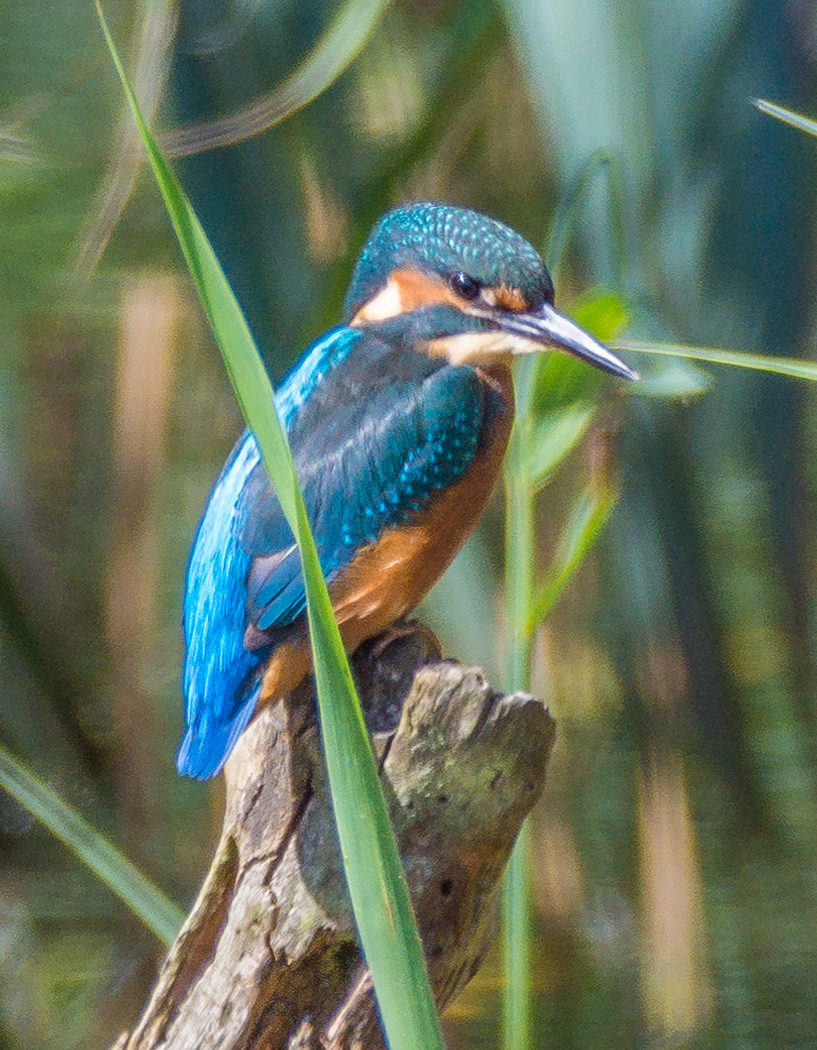Reserve ramblings - how to spot a kingfisher

How to spot a kingfisher at WWT Washington...
After a few months in hiding (or raising kingfisher chicks... we're hoping it's the latter) we've had increased and almost daily sightings of kingfisher down on the saline lagoon, predominantly on the river reedbed... don't you just love it when a plan comes together?!!
Reserve warden David Dinsley talks us through his tips on the best way to try and catch a glimpse:
 Here at WWT Washington Wetland Centre, the end of the summer is signalled by the return of the popular and (usually) elusive kingfisher. Sightings have become more regular in the last week or two following a gap over the last few month.
Here at WWT Washington Wetland Centre, the end of the summer is signalled by the return of the popular and (usually) elusive kingfisher. Sightings have become more regular in the last week or two following a gap over the last few month.

Where and when is the best place to view kingfisher?
Though kingfisher have been seen all across our site with sightings in the stream channel outside the visitor centre, over close encounters and down on the river, the most reliable location is definitely the river reed bed.
Comfortably viewed from the Lagoon View Hide; the reed bed and appropriately named ‘Kingfisher Pool’ has multiple perching points that kingfisher often use to rest and fish from. The pool is thriving with wetland invertebrates, amphibians and a plentiful supply of stickleback and their fry. Some days, kingfisher are noted dwelling there for up to an hour, flitting from post to post, before moving on.
High tide on the river is generally the best time to catch them on the reserve as they are unable to fish on the deep moving waters of the river Wear when the tide is high, so they come onto our site to fish in shallower waters. At least three birds were recorded on the reserve at the same time last year.

Top tips to catch a glimpse of kingfisher
To try and guarantee a sighting of one these beautiful birds, stealth is the key.
Approach the hides with caution and be as quiet as possible when inside. Remember to scan the area as kingfisher are not always easy, to see despite their vibrant colour. Being very small in size, smaller than a blackbird, in fact, they can be missed unless you spot the giveaway blazing blue colour of their backs.
Having time to wait also helps - visitors can often be found patiently waiting for a glimpse in the Lagoon View Hide, but when they manage to see one they are not disappointed!
A nice giveaway that a kingfisher is approaching is the loud sharp whistling call they generally make in flight. A good example of their call can be found here: http://www.british-birdsongs.uk/common-kingfisher/
Kingfisher generally spend the cooler months on and around site and depart late winter/early spring to breed, choosing to nest further inland along the river Wear and up the tributaries that flow into it, so come and see them while they're here.
Good luck and get in touch if you manage to spot one! #ReserveRamblings
Images by volunteer photographer Ian Henderson.



